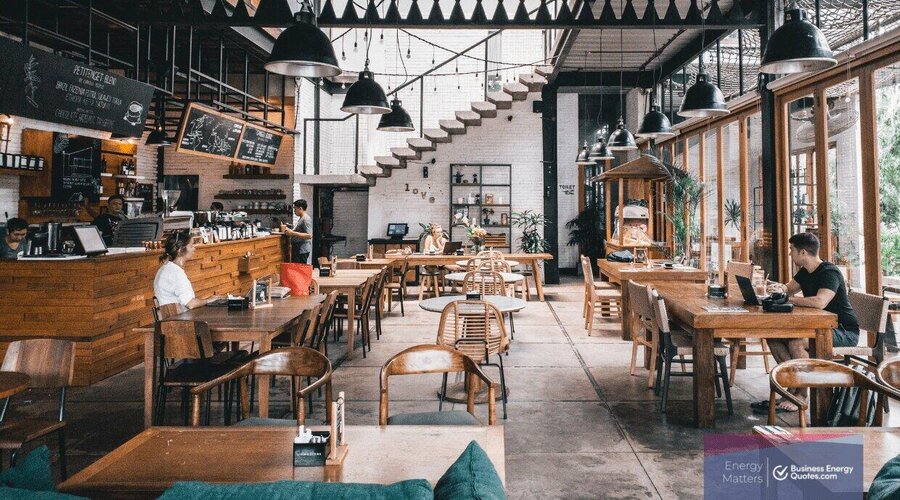Running a cafe is about more than just brewing the perfect cup of coffee—it’s also about managing costs and sustainability. Energy efficiency is a key factor in reducing overhead expenses while making your business more environmentally friendly. From optimizing equipment use to making smart lighting choices, small changes can lead to significant energy savings. Here’s how you can improve energy efficiency in your cafe without compromising on quality or customer experience.
1. Upgrade to Energy-Efficient Equipment
Investing in energy-efficient appliances can save you a lot on electricity bills in the long run. Look for ENERGY STAR-certified coffee machines, refrigerators, dishwashers, and ovens. These appliances use less power while maintaining high performance.
- Espresso Machines: Choose models with energy-saving modes or automatic shutoff features.
- Refrigerators & Freezers: Ensure they are properly sealed and maintained to prevent energy waste.
- Dishwashers: Opt for low-energy models that use less water and heat.
Regular maintenance also plays a role in energy efficiency. Descale coffee machines and clean refrigerator coils to ensure they operate at peak efficiency.
2. Optimize Lighting for Energy Savings
Lighting is a major energy consumer in any cafe. Switching to LED bulbs can reduce energy consumption by up to 75% compared to traditional incandescent bulbs.
- Natural Light: Maximize natural light by incorporating large commercial windows in Michigan or installing skylights for a brighter, more energy-efficient space.
- LED & Smart Bulbs: Use LED lights for interior lighting, and consider smart bulbs with dimmers or timers.
- Motion Sensors: Install motion-sensor lights in storage areas and bathrooms to avoid wasting electricity.
These small adjustments can make a big difference in your cafe’s overall energy consumption.
3. Smart Temperature Control
Heating and cooling account for a significant portion of a cafe’s energy costs. Managing indoor temperatures wisely can lead to major savings.
- Programmable Thermostat: Set a schedule to adjust heating and cooling based on operating hours.
- Ceiling Fans: Use fans to circulate air efficiently, reducing the need for excessive air conditioning.
- Insulation & Sealing: Properly insulate windows and doors to prevent heat loss or unwanted drafts.
Keeping your cafe comfortable without overworking the HVAC system is essential for energy efficiency.
4. Reduce Water and Hot Water Usage
Hot water is necessary for brewing coffee, cleaning dishes, and sanitizing surfaces, but excessive water use can drive up energy costs.
- Low-Flow Faucets & Aerators: Install water-saving devices in sinks to reduce water waste.
- Cold Water for Cleaning: Use cold water for general cleaning when possible instead of hot water.
- Efficient Dishwashing: Run dishwashers only when fully loaded to maximize water and energy use.
These adjustments will lower both energy and water bills while making your cafe more eco-friendly.
5. Implement Energy-Conscious Staff Practices
Your staff plays a vital role in maintaining energy efficiency. Train employees to adopt habits that contribute to lower energy consumption.
- Unplug Unused Equipment: Encourage staff to turn off and unplug machines when not in use.
- Efficient Brewing Methods: Train baristas to use energy-efficient techniques, such as brewing in batches rather than keeping machines running continuously.
- Minimize Opening Refrigerators: Teach staff to keep fridge doors closed as much as possible to maintain cooling efficiency.
When energy-saving practices become part of your cafe’s daily routine, you’ll see significant savings.
6. Use Energy-Efficient Packaging and Serving Methods
Your energy efficiency efforts should extend beyond electricity use—consider how you serve and package your products.
- Reusable Cups & Containers: Encourage customers to bring reusable cups to reduce waste.
- Compostable & Recyclable Packaging: Use eco-friendly packaging materials to lessen environmental impact.
- Bulk Ingredient Storage: Store coffee beans, sugar, and other ingredients in bulk to reduce the need for excessive refrigeration and packaging waste.
Sustainable packaging aligns with an energy-efficient business model while attracting eco-conscious customers.
7. Schedule Regular Energy Audits
An energy audit can help identify hidden areas where your cafe is wasting energy. Many utility companies offer free or low-cost audits to help businesses optimize their energy use.
- Check for Leaks: Inspect for leaks in refrigeration units, dishwashers, and plumbing that could be causing unnecessary energy loss.
- Monitor Energy Use: Use energy-tracking software or smart meters to pinpoint high-consumption areas.
- Update Old Equipment: Replace outdated appliances that consume excessive energy.
By conducting periodic energy audits, you can make data-driven improvements to reduce energy waste.
Final Thoughts
Energy efficiency in your cafe is about working smarter, not harder. By upgrading to energy-efficient appliances, optimizing lighting, managing heating and cooling, conserving water, training staff, using sustainable packaging, and conducting regular audits, you can significantly cut costs while reducing your environmental impact.
A more energy-efficient cafe isn’t just good for your bottom line—it’s also a great way to attract environmentally conscious customers and show that your business cares about sustainability. Start implementing these strategies today, and watch your energy savings grow!


